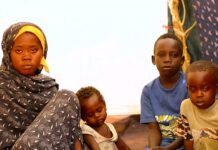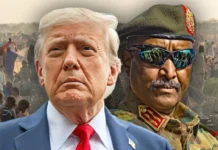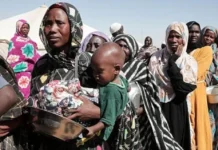A new documentary that reflects the horrors inside Sudan’s capital, Khartoum. The way back from the army general command to Omdurman, the road was not smooth. A bullet hits the car window and shatters the camera. Dozens of bodies lying on the sides of the roads, torture sites, and the destruction of infrastructure. The capital has become a place littered with corpses and ghosts.
KHARTOUM MAY 2: Today we are showing a documentary by Momen Mohamed Almakki Abdelgader, a young journalist and content creator interested in languages and economics. Take part in his report from Khartoum and Omdurman.
Our journey in this documentary begins in Egypt, the cradle of civilization and the land of the Pharaohs, and the primary destination for Sudanese, to document one of the most difficult humanitarian crises the world has witnessed: the Sudanese war, which has generated the largest displacement crisis, according to the United Nations.
Egypt Airlines flight MV2094 took us to Port Sudan, the northernmost city in Sudan, the temporary administrative capital, where we are supposed to document the manifestations of the largest displacement crisis in the world.
For two years of war, successive truces in Sudan have failed to halt the fighting between the warring parties, the army and the Rapid Support Forces. In the states of Khartoum, Darfur, and Kordofan, no voice is louder than the sound of guns and cannons.
The coastal city of Port Sudan is teeming with more than 200 displacement camps housing more than 210,000 people displaced from the raging conflict zones.
At Port Sudan Airport, a Sudanese military plane will take us to the Sudanese capital, Khartoum, under heavy security measures. This is the first time a team of journalists has been able to reach this spot, especially after the army opened the road to the General Command in the center of the capital, Khartoum in late February 2025.
The military plane lands safely at Wadi Saydna military base, but before landing, it shows us aerial views of Omdurman, which has already begun to recover from the devastation.
We march in an army convoy toward the General Command, surrounded by RSF snipers from all sides. Sometimes we are prevented from filming, other times we are allowed. Sometimes the vehicle exceeds 120 km/h to escape sniper fire, and other times it slows down.
For the first time, the army command in Khartoum appears in front of us as we cross the Blue Nile Bridge. Inside the headquarter, the commanders celebrate liberation.
On our way back from the army general command to Omdurman, the road was not smooth. A bullet hits the car window and shatters the camera.
In the Sudanese capital, Khartoum, the signs of suffering are evident in three main aspects: dozens of bodies lying on the sides of the roads, torture sites, and the destruction of infrastructure. The capital, once teeming with life, has become, overnight, a place littered with corpses and ghosts.
Graveyards in Khartoum have become a landmark in the city. You can hardly find a public square without graves, especially after reports indicated that nearly 150,000 people died, most of them in the capital.
Sudanese people are not killed by bullets alone. Mohamed Omar and others were almost killed here in Radio and Television Building, and behind these walls, under the torture of the Rapid Support Forces, which operates more than 40 detention centers in the capital alone holding at least 9,000 people, according to activists.
The sound of cannons continues here in Omdurman. The war has not yet ended. Cannons and fires rage in another areas too in Sudan, but this time in the far west, in El Fasher, the last stronghold of the Sudanese army. Rapid Support Forces have been besieging it for more than a year and a half, creating the worst humanitarian crisis in Sudan.








